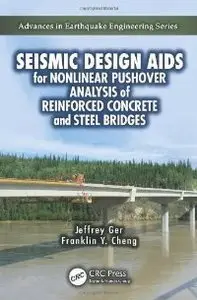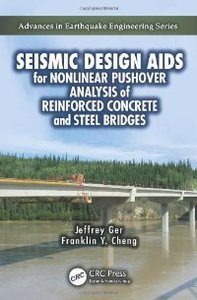Jeffrey Ger, "Seismic Design Aids for Nonlinear Pushover Analysis of Reinforced Concrete and Steel Bridges"
2011 | ISBN: 1439837635 | 400 pages | PDF | 8 MB
2011 | ISBN: 1439837635 | 400 pages | PDF | 8 MB
Nonlinear static monotonic (pushover) analysis has become a common practice in performance-based bridge seismic design. The popularity of pushover analysis is due to its ability to identify the failure modes and the design limit states of bridge piers and to provide the progressive collapse sequence of damaged bridges when subjected to major earthquakes. Seismic Design Aids for Nonlinear Pushover Analysis of Reinforced Concrete and Steel Bridges fills the need for a complete reference on pushover analysis for practicing engineers.
This technical reference covers the pushover analysis of reinforced concrete and steel bridges with confined and unconfined concrete column members of either circular or rectangular cross sections as well as steel members of standard shapes. It provides step-by-step procedures for pushover analysis with various nonlinear member stiffness formulations, including:
Finite segment–finite string (FSFS)
Finite segment–moment curvature (FSMC)
Axial load–moment interaction (PM)
Constant moment ratio (CMR)
Plastic hinge length (PHL)
Ranging from the simplest to the most sophisticated, the methods are suitable for engineers with varying levels of experience in nonlinear structural analysis.



